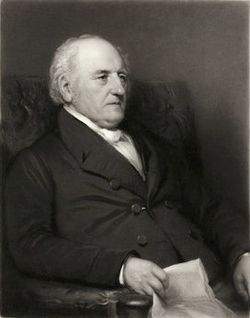Nationality English | Role Mathematician Name Peter Barlow | |
 | ||
Born 13 October 1776Norwich ( 1776-10-13 ) Known for Barlow lens, Barlow's Tables Died March 1, 1862, Kent, United Kingdom Children William Henry Barlow, Peter W. Barlow Books Barlow's Tables of Squares, Cubes, Square Roots, Cube Roots, and Reciprocals of All Integers Up to 12,500 Fields Mathematics, Physics, Engineering | ||
Peter Barlow (13 October 1776 – 1 March 1862) was an English mathematician and physicist.
Contents

Work in mathematics
In 1801, Barlow was appointed assistant mathematics master at the Royal Military Academy, Woolwich, and retained this post until 1847. He contributed articles on mathematics to The Ladies' Diary as well as publishing books such as:
The latter became known as Barlow's Tables and gives squares, cubes, square roots, cube roots, and reciprocals of all integer numbers from 1 to 10,000. These tables were regularly reprinted until 1965, when computers rendered them obsolete. He contributed to Rees's Cyclopædia articles on Algebra, Analysis, Geometry and Strength of Materials. Barlow also contributed largely to the Encyclopædia Metropolitana.
Work in physics and engineering
In collaboration (1827-1832) with optician George Dollond, Barlow built an achromatic lens that utilized liquid carbon disulfide. (Achromatic lenses were important optical elements of improved telescopes.) In 1833, Barlow built an achromatic doublet lens of joined flint glass and crown glass. A derivative of this design, named a Barlow lens, is widely used in modern astronomy and photography as an optical element to increase both achromatism and magnification.
In 1823, he was made a fellow of the Royal Society. Two years later, he received its Copley Medal for his work on correcting the deviation in ship compasses caused by the presence of iron in the hull. Some of his magnetic research was done in collaboration with Samuel Hunter Christie. He conducted early experimental and observational studies on the origins of terrestrial magnetism. He is credited with the eponymous Barlow's wheel (an early homopolar electric motor) and with Barlow's law (an incorrect formula of electrical conductance).
Steam locomotion received much attention at Barlow's hands and he sat on the railway commissions of 1836, 1839, 1842 and 1845. He also conducted several investigations for the newly formed Railway Inspectorate in the early 1840s.
Barlow made several contributions to the theory of strength of materials, including Essay on the strength and stress of timber (1817) which contains experimental data collected at Woolwich. The sixth edition (1867) of this work was prepared by Barlow's two sons after his death and contains a biography of their father. Barlow also applied his knowledge of materials to the design of bridges. His sons Peter W. Barlow and William Henry Barlow became notable civil engineers of the 19th century. He was elected a Foreign Honorary Member of the American Academy of Arts and Sciences in 1832.
Following his death in 1862 at his home in Charlton, he was buried in Charlton Cemetery.
